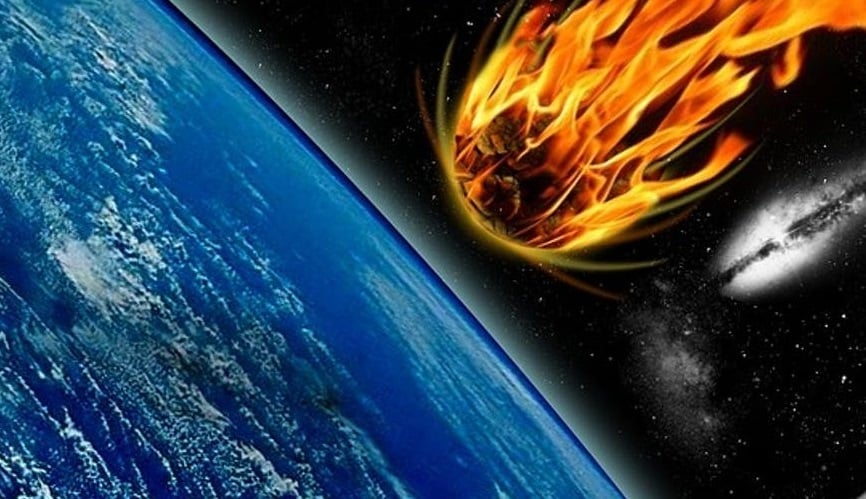In 2008, scientists from Oxford and Aberdeen University made a startling discovery in the northwest of Scotland. Near the village of Ullapool, which sits on the coast opposite the Outer Hebrides, they found a debris deposit created by an ancient meteor impact dated to 1.2 billion years ago. The thickness and extent of the debris suggested that the meteor measured 1 km (0.62 mi) in diameter and took place near to the coast.
Until recently, the precise location of the impact remained a mystery to scientists. But in a paper that recently appeared in the Journal of the Geological Society ,a team of British researchers concluded that the crater is located about 15 to 20 km (~9 to 12.5 mi) west of the Scottish coastline in the Minch Basin, where it is buried beneath both water and younger layers of rock.
The research team was led by Dr. Kenneth Amor, who was joined by multiple colleagues from the Department of Earth Sciences at the University of Oxford, and Stephen P. Hesselbo - a professor of geology at the Camborne School of Mines and Environment and Sustainability Institute at the University of Exeter.
The Minch refers to the straight that sits between the Scottish Mainland and the Hebrides islands, which is part of the Inner Seas region just off the coast ofwestern Scotland. The team determined that the meteor impact took place in this region based on multiple lines of evidence. These included field observations, analysis of broken rock fragments, and the alignment of magnetic particles.
In some ways, it would have looked similar to what scientists image Mars looked like billions of years ago, with semi-arid conditions and with some water on its surface. The study also provides insight into Earth's ancient evolution and could even provide hints about future impacts. Roughly one billion years ago, Earth and the other planets of the Solar System experienced a higher rate of meteorite impact than they do today.
This was the result of collisions between asteroids and debris objects that were left over from the formation of the early Solar System. However, due to the number of asteroid and comet fragments that are still floating around in the Solar System today, it is possible a similar impact event will happen at some point in the not-so-distant future.
At present, impacts by smaller objects - measuring a few meters in diameter - are thought to be a relatively common occurrence, happening once every 25 years on average. On the other hand, objects measuring about 1 km (0.62 mi) in diameter are thought to collide with Earth once every 100,000 to one million years.
However, official estimates vary due to the fact that the terrestrial record of large impacts is poorly constrained. Unlike celestial bodies like Mars or the Moon, craters are regularly obliterated on Earth by erosion, burial, and tectonic activity. Knowing with confidence where and when past impacts took place, and what effects they had, is key to understanding what we might be facing someday.
In that sense, the identification of Minch meteor site could aid in the development of planetary defense as well as provide better insights into Earth's geological history.
*Further Reading: University of Oxford*, Journal of the Geological Society
 Universe Today
Universe Today


